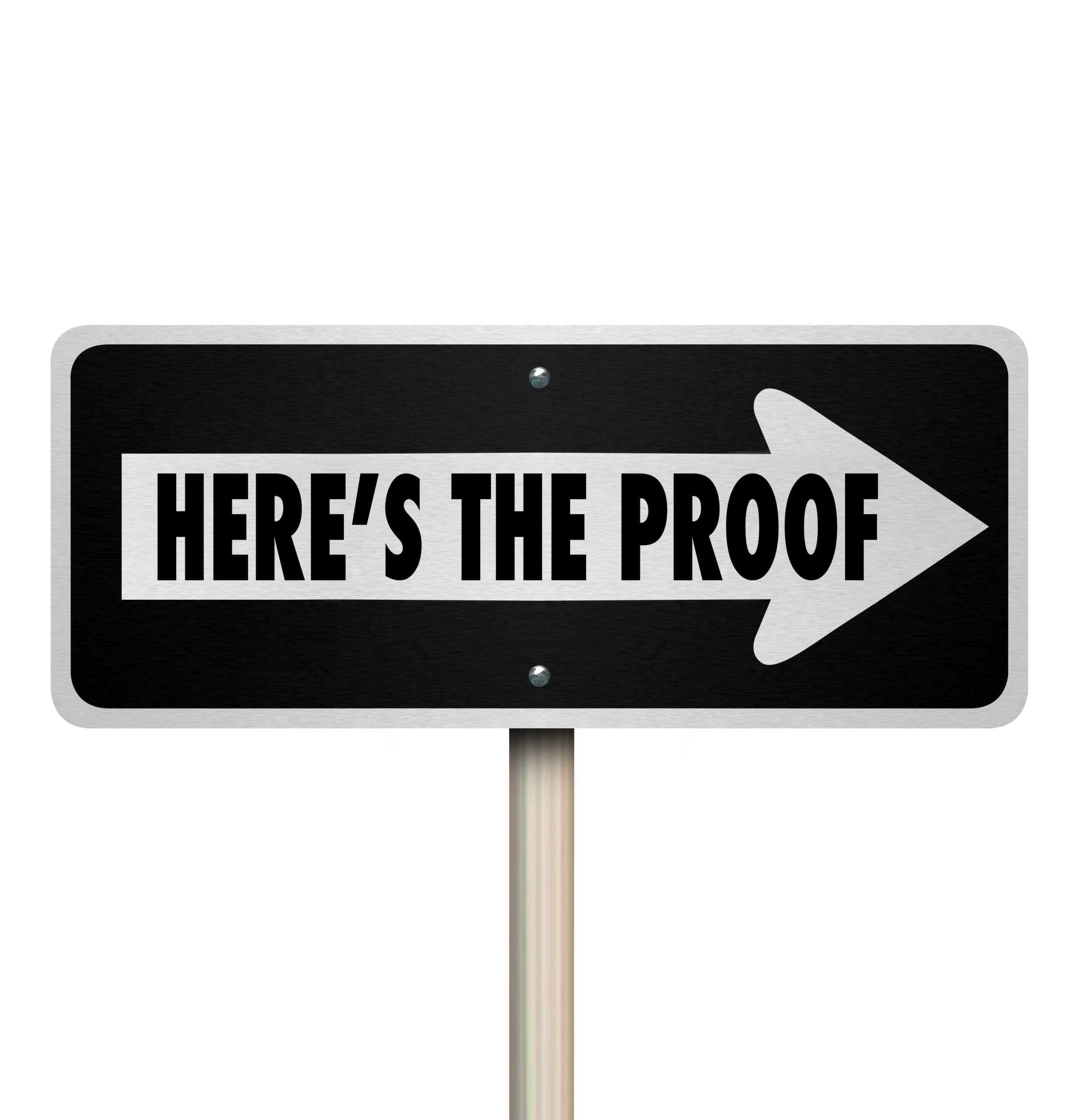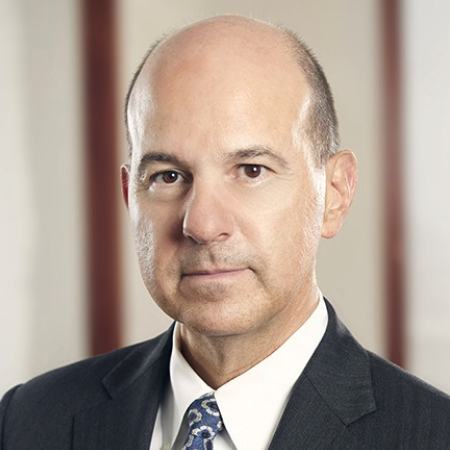“The value of home-grown innovation to public health, national security and economic recovery has never been clearer. Yet, here in America, the law originally intended to encourage that innovation has never been so muddled.”
 Patent eligibility law in the United States is in a state of disarray that has led to inconsistent case decisions, deep uncertainty in the innovative, investment and legal communities, and unpredictable outcomes in patent prosecution and litigation. These facts have been extensively documented in multiple sources, including: the statements of all 12 active judges of the nation’s only patent court, the U.S. Court of Appeals for the Federal Circuit (confirmed prior to October 2021); the findings and reports of the Executive branch across all recent Administrations; the bi-partisan conclusions of Congressional committees; a robust body of academic studies; and at least forty separate witness statements at the 2019 hearings on this issue before the Senate Committee on the Judiciary Subcommittee on IP, including statements from advocates that oppose Section 101 reforms.
Patent eligibility law in the United States is in a state of disarray that has led to inconsistent case decisions, deep uncertainty in the innovative, investment and legal communities, and unpredictable outcomes in patent prosecution and litigation. These facts have been extensively documented in multiple sources, including: the statements of all 12 active judges of the nation’s only patent court, the U.S. Court of Appeals for the Federal Circuit (confirmed prior to October 2021); the findings and reports of the Executive branch across all recent Administrations; the bi-partisan conclusions of Congressional committees; a robust body of academic studies; and at least forty separate witness statements at the 2019 hearings on this issue before the Senate Committee on the Judiciary Subcommittee on IP, including statements from advocates that oppose Section 101 reforms.
This undeniable state of uncertainty has profoundly and negatively impacted sectors of the American innovation economy that rely on patents and clear patent laws to incentivize their work. As with the uncertainty, the deeply negative impact is well-documented through a robust body of data, empirical studies and testimonial evidence. Among other effects, the impact includes reduced investment and reduced innovation in key fields of technology like medical diagnostics, biotechnology, software, blockchain and artificial intelligence (AI). If not soon addressed, the result will be dire consequences for the health and wellbeing of Americans and broader humanity, U.S. national security, and American jobs and competitiveness. As Senator Chris Coons (D-DE), the then-Ranking Member of the Senate Judiciary IP Subcommittee, stated in 2019, “Today, U.S. patent law discourages innovation in some of the most critical areas of technology.” And as then-Chairman Senator Thom Tillis (R-NC) further stated in a 2019 hearing of the Senate Committee on the Judiciary’s Subcommittee on Intellectual Property (116th Congress), “What we do on this subject will have major implications for every aspect of America’s innovation economy and it will determine if the United States remains the world’s leading innovator in the 21st century.” Many others have echoed these sentiments.
Since those bipartisan statements, the world has faced and continues to face a global pandemic that has only underscored the critical need for innovative diagnostics, vaccines based on genetic research, and software-based tools. Despite the importance of these technologies being on full display, the United States has done nothing to remedy the legal uncertainty and its suboptimal innovation ecosystem. China, meanwhile, has continued to expand its technological capabilities and global influence. It and other key competitor countries have wisely linked their national strategic priorities to the strength of key emerging technological fields like AI, blockchain, biotechnology and personalized medicine. The value of home-grown innovation to public health, national security and economic recovery has never been clearer. Yet, here in America, the law originally intended to encourage that innovation has never been so muddled.
As summarized below, a robust body of evidence demonstrates both that current Section 101 jurisprudence has created deep legal uncertainty, and that the uncertainty is inflicting lasting harm on technological sectors that are critical to the U.S. economy, U.S. competitiveness and the public interest.
In this paper, we also address other relevant concerns about the state of patent eligibility law. Some of these relate to specific proposed changes to patent eligibility law. Another relates to the ongoing threat to U.S. competitiveness caused by China and its increasingly attractive patent system (as compared to the U.S. system).
A final point discussed explains the likely differential effects of the confused patent eligibility law on different technology areas and responds to the contention by some that there are no examples of innovation being harmed in the tech sector. Research by Professor Jonathan Barnett explores the varied effects of having a weak patent system and concludes: “Without exaggeration, the U.S. patent system stands at the precipice of abandoning any meaningful commitment to property rights in the technology markets that drive the innovation economy.” That should be an alarming conclusion for anyone who cares about America’s future.
I. There is Overwhelming Evidence of Uncertainty in Patent Eligibility Law
The legal uncertainty existing under the current Section 101 framework, as well as the resulting inconsistency of case decisions, has been well-documented by our nation’s judges, lawmakers and users of the patent system over many years.
A. The Federal Circuit Has Repeatedly Noted the Uncertainty
Starting with the Federal Circuit, all active judges on the court (who were confirmed prior to October 2021) unanimously agree that the legal standard is uncertain, the case law is inconsistent, and further guidance is needed. As Chief Judge Moore stated:
As the nation’s lone patent court, we are at a loss as to how to uniformly apply §101. All twelve active judges of this court urged the Supreme Court to grant certiorari in Athena to provide us with guidance regarding whether diagnostic claims are eligible for patent protection. There is very little about which all twelve of us are unanimous, especially when it comes to § 101. We were unanimous in our unprecedented plea for guidance . . . . [W]e have struggled to consistently apply the judicially created exceptions to this broad statutory grant of eligibility, slowly creating a panel-dependent body of law and destroying the ability of American businesses to invest with predictability.”
Other Federal Circuit judges, including Judge Plager in Interval Licensing LLC v. AOL, Inc and Judge Newman in both American Axle and Athena v. Mayo, have echoed Judge Moore’s above statements.
The unanimous view of the Federal Circuit’s 12 active judges (as of October 2021) is dispositive proof of the uncertainty, and that the law cannot be uniformly applied to reach consistent decisions, given the Federal Circuit’s unique judicial role as the final arbiter of U.S. patent eligibility in almost all cases. These jurists, after all, are the ones whom our nation has entrusted to “decide the fate” of our innovators’ efforts. As former Chief Judge Paul Michel, one of the authors of this paper, has said, “If I, as a judge with 22 years of experience deciding patent cases on the Federal Circuit’s bench, cannot predict outcomes based on case law, how can we expect patent examiners, trial judges, inventors and investors to do so?”
B. The Two Other Branches of Government Acknowledge the Uncertainty
Both other branches of government have further acknowledged and documented the uncertainty inherent in current eligibility law—and in a bipartisan manner. In 2019, for example, the Solicitor General, representing the views of the United States before the Supreme Court, wrote:
[T]he Court’s recent Section 101 decisions have fostered substantial uncertainty. . . . Although Mayo is the most immediate source of confusion, the uncertainty ultimately stems from the broader framework articulated in the Court’s recent Section 101 decisions . . . . The confusion created by this Court’s recent Section 101 precedents warrants review in an appropriate case.
The current Administration has likewise acknowledged the “legal uncertainties created by current U.S. patent eligibility and patentability doctrine.” As the current Administration’s Solicitor General recently reiterated, echoing the previous two Administrations, “the Mayo/Alice framework has given rise to substantial uncertainty” as well as “confusion in the lower courts.” The same conclusions have been reached by USPTO Directors from every single Administration since Bilski was decided in 2010. See, e.g., here, here and here. This includes the current Director, who testified in her confirmation hearings that “we need more clarity when it comes to patent eligibility” and that “[w]e need more clarity so that inventors will be incentivized to invent, and investors will be incentivized to invest.” Together, these sources highlight the consistent and bi-partisan consensus—for over a decade in the Executive branch—that the current state of eligibility law is a serious problem that must be fixed.
That sentiment is also shared on a bipartisan basis by the members of Congress who lead the Committees responsible for fulfilling Congress’ constitutional duty to establish IP laws that promote scientific and technological progress. In 2019, for example, the Senate Committee on the Judiciary Subcommittee on Intellectual Property held a series of hearings on the State of Patent Eligibility in America, at which both then-Chairman Senator Thom Tillis (R-NC) and Ranking Member Senator Chris Coons (D-DE) lamented the state of uncertainty that currently plagues U.S. eligibility law—sentiments that both Senators repeated in Senate Judiciary Committee nomination hearings in December 2021.
In his 2019 opening remarks, for instance, Chairman Tillis noted that “the lack of predictability and certainty under the current law will prevent the innovation ecosystem from fully realizing its innovation potential.” In December 2021, Senator Tillis reiterated that “current [eligibility] jurisprudence is in shambles right now and we have to work on fixing it and providing clarity.” Ranking Member Coons similarly stated in 2019 that “recent decisions of the Supreme Court over a decade have clouded the waters regarding exactly what types of inventions merit protection, even if these inventions are groundbreaking, revolutionary and useful. Determining whether an invention is an abstract idea, for example, has proven to be a truly unpredictable test for eligibility, with many now viewing results as really turning on the luck of the draw, depending on which examiner or judge reviews them.” In December 2021, Senator Coons reaffirmed, “I do think legislative reform is required in Section 101.”
In a similar vein, in March 2020, the non-partisan Congressional Research Service, analyzing the Federal Circuit’s actions in 2019’s Athena v. Mayo, observed in its report, Judges Urge Congress to Revise What Can Be Patented, that “denial of a full-court rehearing accompanied by eight separate opinions has never occurred in the history of the Federal Circuit.” The report also noted that “[t]he number of opinions in Athena indicates that although the judges are divided on what should be done in view of current Supreme Court precedent, they view the section 101 issue as extremely important.”
Witness testimony from the 2019 Senate Judiciary IP Subcommittee hearings overwhelmingly confirms that patent owners, investors, former jurists, former USPTO Directors, IP lawyers, academics, and accused infringers alike view the law as unclear and unpredictable. At least 40 of the 45 witnesses testified that the Mayo/Alice framework has injected uncertainty into Section 101—including most of those who opposed reforms.
C. Leading Law Professors Have Likewise Identified the Rampant Confusion
National and international confusion and uncertainty over current U.S. patent eligibility law has also been documented over many years in academic conferences, focus groups, journal articles, and business analyses, including the following:
- Dennis Crouch, What Level of Abstraction?, PatentlyO (Dec. 15, 2021): “ ‘An abstract idea can generally be described at different levels of abstraction.’ Apple, Inc. v. Ameranth, Inc., 842 F.3d 1229, 1240 (Fed. Cir. 2016). I really have no idea what to make of this quote from Judge Reyna’s opinion, but the PTAB judges appear to love it.”
- Jay P. Kesan & Runhua Wang, Eligible Subject Matter at the Patent Office: An Empirical Study of the Influence of Alice on Patent Examiners and Patent Applicants, 105 Minn. L. Rev. 527, 538 (2020): “Compared to the patent laws in countries that focus on industrial applicability for defining eligible subject matter, the two-step test in Alice is hardly a bright line rule that delineates what subject matter is patent-eligible and what is not. As a result, even though the four statutory categories of inventions (e.g., process, machine, manufacture, or composition of matter) recited in § 101 are clear, the ‘abstract idea’ exception under Alice renders the application of § 101 vague and uncertain.”
- Talha Syed, Reconstructing Patent Eligibility, 70 Am. Univ. L. Rev. 1, 1 (Oct. 25, 2021): “Patent law’s doctrine of ineligible subject matter is widely agreed to be in a bad state of repair. Even those welcoming the Supreme Court’s return to express subject-matter bars have been left disoriented by the Court’s pronouncements in this area. Which subject matter is ineligible, why it is ineligible, and how it might become eligible have all remained enshrouded in mystery.”
- Shahrokh Falati, Patent Eligibility of Diseases Diagnosis, 21 N.C. J.L. & Tech. 63, 63 (Mar. 1, 2020). In Mayo, Myriad and Alice, the Supreme Court “has effectively redefined the scope of patent eligible subject matter by greatly expanding the scope of the judicially-created exceptions to the statutory patent eligibility laws, thereby significantly narrowing the scope of subject matter that is patent-eligible. Moreover, with this recent change, there are now two lines of Supreme Court cases that are inconsistent and contradict each other. The effect of this uncertainty has been profound, devastating the biotechnology, personalize medicine, and medical diagnostics industries in the United States.”
- Runha Wang & Jay P. Kesan, How Alice Affects Bioinformatics Patent Applications? (Sept. 4, 2020). Conference Paper, Wiet Life Science Law Scholars Workshop 2020: “It has been difficult to define what the three categories of exclusions mean in practice, partly because the meanings of these exclusions are unclear. As a result, courts have struggled to specify legal tests to operationalize these exclusions.”
- Daniel R. Cahoy, Patently Uncertain, 17 Nw. J. Tech. & Intell. Prop. 1, 37 (2019): “How do we know that patentability analysis presents an uncertainty problem rather than a new choice for more narrow standards? The simplest indication that the post-Alice world is uncertain is that similar types of inventions are treated differently depending on how a particular court (or appellate panel) views either abstraction or additional inventive activity.”
- Jeffrey A. Lefstin, Peter S. Menell, & David O. Taylor, Final Report of Berkeley Center for Law & Technology Section 101 Workshop: Addressing Patent Eligibility Challenges, 33 Berkeley Tech. L.J. 555, 597 (2018): “There was consensus that a test requiring a search for an ‘inventive’ application of a natural law or physical phenomenon does not provide adequate objective guidance to patent examiners, jurists, practitioners, or the inventive community,” and that “[m]any participants viewed patent eligibility doctrine as incoherent. It lacks the clarity needed for a property-based incentive regime to function effectively.”
- Kristen Osenga, Institutional Design for Innovation: A Radical Proposal for Addressing 101 Patent Eligible Subject Matter, 68 Am. Univ. L. Rev. 1191, 1195 (2019): “The current chaos that is patent eligible subject matter arose largely from a series of cases decided by the Supreme Court between 2010 and 2014, followed by aftershocks driven by the lower courts and the United States Patent and Trademark Office (Patent Office) as these institutions tried to figure out what the Supreme Court had actually decided. This rapidly developing (or perhaps devolving depending on your perspective) jurisprudence had two destabilizing effects on patent law and on innovation more broadly. First, there is immense confusion about precisely what the test for patent eligible subject matter is and how it should be applied. Second, a number of previously-issued patents have been invalidated for lack of patent eligible subject matter, raising questions about the viability of extant patent rights in many important industries.”
- David O. Taylor, Amending Patent Eligibility, 50 U.C. Davis. L. Rev. 2149, 2149 (2017): “The Supreme Court’s recent treatment of the law of patent eligibility has introduced an era of confusion, lack of administrability, and, ultimately, risk of under-investment in research and development.”
- A Proposed Path Forward for Legislatively Addressing Patent Eligibility Law, From the conference: Patenting Genes, Natural Products and Diagnostics: Current Status and Future Prospects, Held at The Banbury Center, Cold Spring Harbor Laboratory, Cold Spring Harbor, NY (2016). This letter reports consensus that the Supreme Court’s “two-part test . . . has proven to be highly subjective and arbitrary in its application.” See also here.
- O. Taylor, Confusing Patent Eligibility, 84 Tenn. L. Rev. 157 (2016). “Patent law—and in particular the law governing patent eligibility—is in a state of crisis. This crisis is one of profound confusion.”
- Christopher M. Holman, Patent Eligibility Post-Myriad: A Reinvigorated Judicial Wildcard of Uncertain Effect, 82 Geo. Wash. L. Rev. 1796, 1822 (2014). “Given the lack of clarity in the Court’s patent eligibility decisions, there appears to be a strong consensus that the primary outcome of the Supreme Court’s recent patent eligibility decisions has been increased confusion in the lower courts, the PTO, and the innovator community.”
- John F. Duffy, Opinion Analysis: The Uncertain Expansion of Judge-Made Exceptions to Patentability, SCOTUSblog (June 20, 2014). “Given the Supreme Court’s explicit acknowledgment that the judge-made exclusionary principle to patentability could swallow all of patent law, one might think that the Court would be very careful, and very clear, in demarcating a limit on the doctrine so that lawyers and lower court judges would know which patents should fall, and which should survive, the analysis. Yet the Supreme Court has been remarkably resistant to providing clear guidance in this area, and this case [Alice] continues that trend.”
The above body of evidence demonstrates, beyond any reasonable doubt, that the state of patent eligibility law in America is in disarray. In Part II of this series, we will address evidence of the real harms this situation has caused.
Read the whole series:
Image Source: Deposit Photos
Image ID: 50105467
Author: iqoncept

![[IPWatchdog Logo]](https://ipwatchdog.com/wp-content/themes/IPWatchdog%20-%202023/assets/images/temp/logo-small@2x.png)




![[Advertisement]](https://ipwatchdog.com/wp-content/uploads/2024/04/Patent-Litigation-Masters-2024-sidebar-early-bird-ends-Apr-21-last-chance-700x500-1.jpg)

![[Advertisement]](https://ipwatchdog.com/wp-content/uploads/2021/12/WEBINAR-336-x-280-px.png)
![[Advertisement]](https://ipwatchdog.com/wp-content/uploads/2021/12/2021-Patent-Practice-on-Demand-recorded-Feb-2021-336-x-280.jpg)
![[Advertisement]](https://ipwatchdog.com/wp-content/uploads/2021/12/Ad-4-The-Invent-Patent-System™.png)







Join the Discussion
12 comments so far.
Eileen McDermott
October 11, 2022 04:41 pmDozens, I think your question is addressed in Part II, just published: https://ipwatchdog.com/2022/10/11/presenting-evidence-patent-eligibility-reform-part-ii-harm-rd-investment-innovation-u-s-interests/id=151960/
B
October 11, 2022 02:01 pm“ Starting with the Federal Circuit, all active judges on the court (who were confirmed prior to October 2021) unanimously agree that the legal standard is uncertain, the case law is inconsistent, and further guidance is needed.”
I call b.s.
Half the CAFC judges are committed to maintaining chaos
Anonymous
October 10, 2022 01:22 pmThis article deserves a standing ovation. Congress should listen, end the state of disarray, and legislate to promote innovation.
B
October 9, 2022 01:20 am@ Night Writer “The language of the current bill to amend 101 would effectively end all EE/CS patents.”
Some people would tell you “That’s the point!”
Me? I’m on the fence b/t that’s the point and incompetence.
Our ground eye view as patent prosecutors gives us a practical perspective the academics and black-robed crowd don’t see.
Night Writer
October 8, 2022 12:44 pmThe language of the current bill to amend 101 would effectively end all EE/CS patents.
Anon
October 7, 2022 06:41 pmGentle Authors,
You are invited to peruse back posts for my very own coined term of Kavanaugh Scissors, as your aim here is nothing more than one of the two shears that I had provided.
loq
October 7, 2022 10:12 am“….is inflicting lasting harm on technological sectors that are critical to the U.S. economy, U.S. competitiveness..”
I wonder when that harm become irreparable ? It gives me the shivers to think a Court could lack such foresight to enable infliction of irreparable harm on so many.
p.s., beautiful article 🙂
concerned
October 7, 2022 06:31 amThe patent system seems more concern about how the problem was solved instead of the fact the problem was solved via a new process. If you are a beneficiary of the solution, do you really care how your problem was solved?
Section 101 allows the courts to play judge and jury on the means of your solution, whereas, Sections 102, 103 and 112 focus on if a new solution to an actual problem, or improvement to a process, did occur.
The judges say a solution or clarity to Section 101 is desired, much like a person says weight lost is their desire, but does little or nothing to effect that desire. There has been enough cases for the courts to take a stand, but have refused. In fact, my appeal was made precedential so other inventors can also go down in flames courtesy of me. And the judges wasted no time quoting my precedential case.
Nothing happens to correct Section 101 because judges like this authority to basically pick and choose who gets what. It is an authority the judges relish, and articles like this one that articulately point out the carnage or injustice have no direct negative effect on the judges.
Mr. Quinn was the first person to tip me off as to this reality. Commenting on my first IPWatchdog article in 2018, Mr. Quinn remarked what a shame that a process that could benefit society is not eligible for a patent. Of course, what Mr. Quinn observed was judges said as much via their power grab, not what Congress wrote into law. It was admitted by the other side that my progress met the law as written, not as judged by the power grab.
Figure out how to make judges accountable for their decisions, and there will be your solution. Anon suggests stripping SCOTUS (and CAFC?) of their patent jurisdiction would be a solution. I agree, it fires the judges personally from the process, a negative effect to THEM caused by their own power grab.
Dozens
October 6, 2022 05:12 pm[T]he deeply negative impact is well-documented through a robust body of data, empirical studies and testimonial evidence. Among other effects, the impact includes reduced investment and reduced innovation in… software, blockchain and artificial intelligence (AI).
Where would I look to find the “well-documented” decline in either investment or innovation in any one or more of software, blockchain, or AI? What studies demonstrate this “well-documented” decline?
B
October 6, 2022 04:31 pmDear Judge Michel,
Two points of disagreement.
First, at least half the CAFC’s active judges have zero interest in clarity and certainty in Alice/Mayo. In fact, I’m aware of a half-dozen cases where the CAFC panels outright lied, refused to enforce the APA, and/or violated due process. Judge Moore’s dissent in American Axle barely touches on the problem.
Second, the Solicitor’s brief on American Axle was thinly veiled trash that said a lot of nothing. Give us clarity, but don’t talk about evidence????? Again, going back to Judge Moore’s observations in American Axle, the Federal Circuit majority made 112(a) enablement (a question of substantial fact) into an issue of pure law under 101 while violating the patentee’s due process rights and presenting a theory of “abstract” so idiotic it made no sense.
Model 101
October 6, 2022 03:56 pmEveryone knows this but nothing is being done about it.
The whole patent system is in “weasel “ mode. This your word Honorable Judge Michel.
China and Big Tech are standing in the way of reform.
The simple solution is to kill 101 entirely and let the inventors whose patents got the 101 axe go to court.
Thank you for this study as it is clear that US Innovaton has been harmed, but it’s only lip service until 101 is legally and completely eliminated.
Duh!
Pro Say
October 6, 2022 03:53 pmThe eligibility answer is as clear and unassailable as is the eligibility problem:
Remove Section 101.
Problem solved (forevermore).
American innovation leadership restored.
(Sometimes — as here — the simplest solution really is the best solution.)